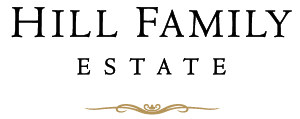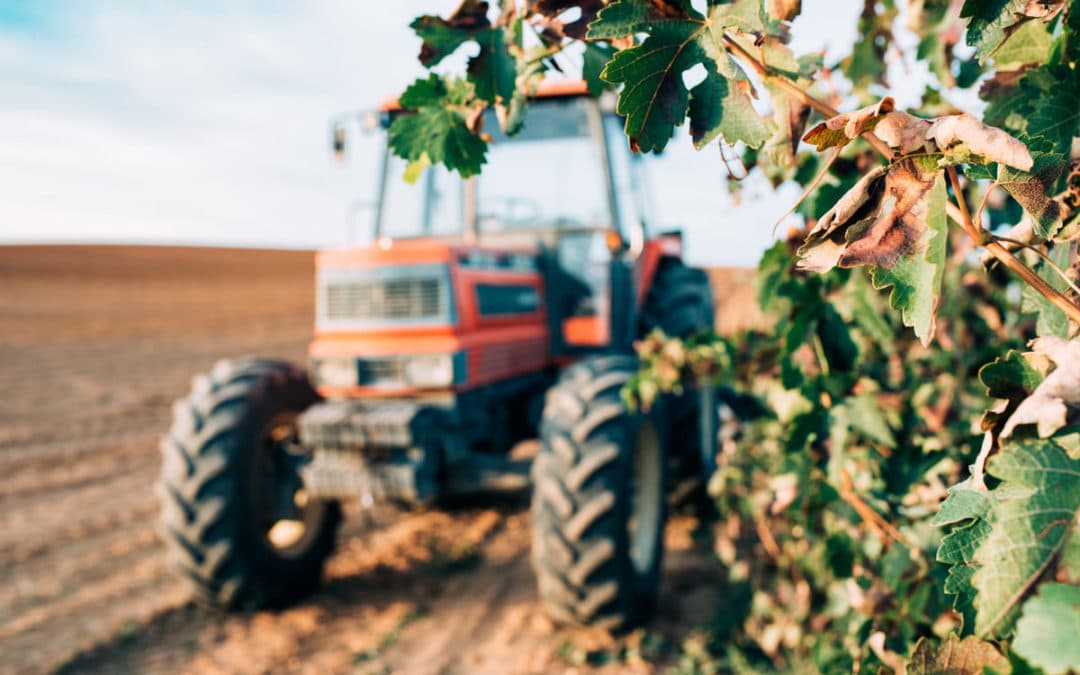Change is in the air, or, rather, in the ground, at the Hill Family Estate Winery. It is time for us to replant our vineyard there. Sitting on Solano Ave just west of Highway 29 on the southern edge of the Yountville AVA (American Viticultural Area), the vineyard will offer us an excellent opportunity to grow the Bordeaux style grapes that perform exceptionally in our region.
Vines, like fruit trees, have a productive lifespan. While the fruit of some old vines is highly prized, the yield from these venerable plants diminishes to the point of no longer being economically viable. Also, as tastes and markets change, winegrowers need to replant in order to meet the demand. Additionally, sometimes a prior planting selection will prove to be less than ideal for the vineyard site.
Replanting is an exciting time in the vineyard, as the grower gets a rare blank slate to match fruit with terroir. Careful observations of temperature, rainfall, sun exposure and soil type guide the winegrower in selecting the right vine for the site.
The first decision is which variety (or cultivar in the lingo of botanists and horticulturalists) to plant. These varieties should be quite familiar to lovers of California wine who identify most of them by their varietal name, such as Cabernet Sauvignon, Merlot, Pinot Noir, etc. When we encounter one of these on a label we have an expectation of what to expect.
Once we pick a variety, the grower has several clones to choose from. A clone is basically a cutting from an observed genetic mutation of the variety. A clone might have a strong aromatic characteristic or some other characteristic the winegrower is interested in. Clones are sometimes given the names of a characteristic, sometimes the name of the vineyard it came from, or sometimes a rather prosaic string of numbers, such as Clone 134.
Because of the risk of phylloxera, the notorious root louse that decimated the wine industry in France in the 1880s and 1890s, we plant all of our vines on resistant rootstock. Phylloxera was a strictly new world pest, and new world grapes evolved over time to resist it. Wine grapes, on the other hand, were strictly old world, and when the two met, had no resistance whatsoever to the louse. The first attempts to fight this plague involved hybridizing new and old world grapes.
Eventually the solution of grafting European wine grapevine onto American rootstock was more favored, and has allowed thriving viticulture in both the old and new world.
Once the winegrower has decided what to plant, the next choice is to how to train. Grapevine in the wild grew up trees, only flowering and fruiting when the ends of the vines broke through the tree canopy. Since no grower wants to have to use a cherry picker to harvest, we train the vines to stay closer to the ground. Depending on sunlight, temperature, and water, the vines are trained to provide the ideal amount of sunlight to the fruit, allowing for proper ripening without sunburn (no one wants spf 45 on their grapes, so we have to use the leaves to provide a proper parasol).
Here in Yountville, we had to mull over all of these decisions when determining what to plant on this five and a half acre vineyard. Our program has a need for more Sauvignon blanc. We also have been looking for different locations for Merlot and Cabernet sauvignon. Since these are all Bordeaux varieties that thrive in our alley, we decided to plant those in our winery vineyard.
Picking the clones is how we fine tune the grapes that go into Hill Family Estate wines. In order to get the stunning aromatics that Sauvignon blanc deliver we went with two clones of this wine, Clone 1 and the Musque clone.
Clone 1, originally from the Chateau d’Yquem in Bordeaux has been in California since the 1880s and features a classic Sauvignon blanc profile. The musque clone, also originally from Bordeaux, has been in California since 1962 and is particularly noted for sporting lower levels of vegetal aromas, allowing for the fruitier ones to come to the forefront.
For the Merlot, we looked to clone 181 to help us with the clay-heavy soils of the vineyard. This clone has performed well in Pomerol, the area in Bordeaux where top-quality French Merlot is cultivated in similar soil. Clone 181 is recognized as delivering outstanding fruit characteristics, which are hallmarks of great Merlot.
Cabernet sauvignon clone 338 is known for producing high-quality fruit that leans toward the juicier side of Cabernet. Cabernet, particularly Napa Cabernet, is a powerhouse variety and picking the right clones is instrumental to attaining that blend of power and complexity that distinguishes our wines from those of other regions. Clone 338 should be a perfect fit for our Cabernet sauvignons going forward.
So, with planting starting, the burning question is “when will we get to drink wines from this vineyard?”
Alas, winemaking is as much an exercise in patience as it is an art. We generally look at three to five years to get a commercial crop. Then, when that first vintage is made, we have about a year for the whites to arrive at our tasting room, and three or so for the reds. So, we will have to wait, and to drink other Hill Family Estate wines until then.
Meanwhile, we would love to have you come by the Yountville tasting room to taste what we have from our other excellent vineyards. It is a good time to relax in the backyard with a lovely chilled Rose of Pinot Noir or to break out a bottle of Clarke Vineyard Syrah to go with your backyard barbecue!

